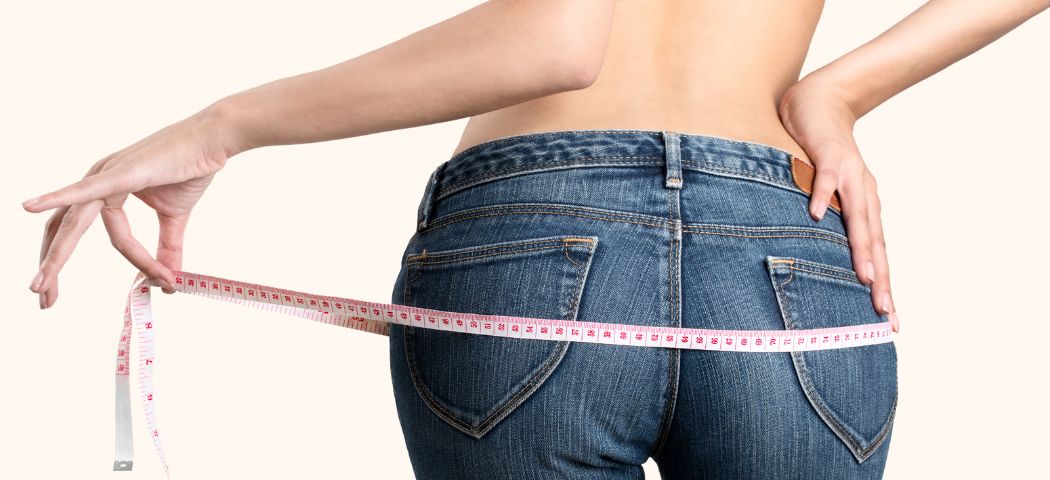The waist-to-hip ratio (WHR) is a simple but effective measurement used to assess body fat distribution and its potential impact on your overall health. By comparing the circumference of your waist to that of your hips, you can gain valuable insights into your risk for certain health conditions and understand more about your weight management needs.
In this article, we’ll discuss how to interpret WHR results, its effects on your health, and its connection to fat reduction and body contouring treatments.
What Is the Waist-to-Hip Ratio?
Your WHR is calculated by dividing the measurement of your waist by the measurement of your hips. This ratio helps determine where your body stores fat, primarily around your abdomen or hips and thighs. The distribution of fat is important because it can be an indicator of any health risk for conditions such as heart disease, diabetes, and other metabolic disorders.
How to Measure WHR
- Waist Measurement: Measure the circumference of your waist at the narrowest part, typically just above the belly button.
- Hip Measurement: Measure the circumference of the widest part of your hips, usually around the buttocks.
Then, use the formula:
WHR= waist circumference / hip circumference
Interpreting Your Results
The World Health Organization (WHO) provides the following WHR classifications based on health risk:
- For women:
- Low risk: WHR of 0.80 or lower
- Moderate risk: WHR between 0.81 and 0.85
- High risk: WHR of 0.86 or higher
- For men:
- Low risk: WHR of 0.90 or lower
- Moderate risk: WHR between 0.91 and 0.99
- High risk: WHR of 1.0 or higher
A higher WHR suggests more fat is stored around the waist (apple-shaped body) has been linked to higher risks of heart disease and metabolic issues. A lower WHR (pear-shaped body) indicates more fat around the hips and thighs carries a lower risk of these conditions.
Health Implications of Waist-to-Hip Ratio
1. Increased Risk of Heart Disease and Diabetes
Carrying excess fat around your midsection, which results in a higher WHR, is associated with a greater risk of cardiovascular diseases and type 2 diabetes. This is because abdominal fat, or visceral fat, surrounds your internal organs can lead to increased inflammation, insulin resistance, and cholesterol imbalances.
2. Understanding Body Composition
A higher WHR doesn’t necessarily mean you need to lose weight overall but may indicate a need for fat reduction around the abdomen for better health. On the other hand, a lower WHR suggests fat is more concentrated around the hips, which may not carry the same level of health risk, but could still be a cosmetic or physical concern for some people who want body contouring treatments.
3. Hormonal Influence
For women, changes in estrogen levels, particularly during menopause, can lead to an increase in abdominal fat, resulting in a higher WHR. This is why women often notice a shift in body fat distribution as they age, moving from a pear-shaped to an apple-shaped figure. Hormonal balance through proper wellness & nutrition, can help mitigate these changes.
How to Improve Your Waist-to-Hip Ratio
If your WHR suggests a higher health risk, making changes to your lifestyle can improve you results.. Here are some tips to help improve your WHR and overall well-being:
1. Prioritize Wellness & Nutrition
Eating a balanced diet is very important in improving your WHR. Focus on nutrient-dense foods such as fruits, vegetables, lean proteins, and whole grains, while limiting processed foods high in sugar and unhealthy fats. The right weight management strategy will not only help with fat reduction but also support your overall health.
2. Engage in Regular Physical Activity
Exercise is essential for reducing visceral fat and improving your WHR. Incorporate a combination of cardiovascular exercises, such as brisk walking, running, or cycling and strength training to burn fat and build lean muscle. Core-strengthening exercises, such as planks or Pilates, can also tone the abdominal area for a healthier waistline.
3. Consider Body Contouring Treatments
For individuals struggling with stubborn fat despite a healthy lifestyle, body contouring treatments like RF slimming and non-invasive liposuction can target fat in the abdominal area. These treatments can help refine your shape and reduce your WHR, especially when combined with a personalized weight management plan.
At Marie France, we offer advanced fat reduction treatments that can complement your efforts in improving your WHR and achieving a more balanced figure. Whether it’s through radio frequency slimming or other non-surgical options, these treatments can help you get closer to your health and wellness goals.
4. Manage Stress
Chronic stress can elevate your cortisol levels, which are linked to increased fat storage around the midsection. Incorporating stress management techniques like yoga, meditation, or breathing exercises can help lower cortisol levels and prevent further fat accumulation in the waist area.
Take the Next Step
Your waist-to-hip ratio (WHR) is an important indicator of how fat is distributed in your body and the potential health risks associated with it. By prioritizing a holistic and balanced approach that includes proper nutrition, regular exercise, and fat reduction treatments, you can work towards improving your WHR and supporting your long-term health.
At Marie France, our holistic weight management programs are tailored to help you achieve both your aesthetic goals and health objectives, empowering you to feel your best, inside and out.
Book your FREE consultation today and receive a personalized plan that’s designed For Every Body!










